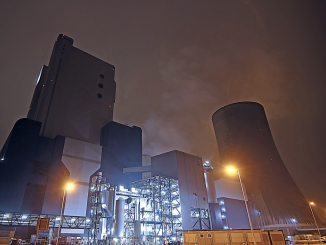
Over the past few days, for all the good reasons, Pakistan is being hailed for having achieved the UN goal of combating climate 10 years prior to the deadline particularly attributable to the implementation of partly adaptation but predominantly mitigation-oriented strategies such as large scale afforestation, and the investment in electric vehicles, clean energy and green jobs. However, there is a need to keep in view the fact that the real outcomes of reduction in greenhouse gas emissions through mitigation take decades to manifest and the role of the developing and low GHG emitter states in altering the global climate situation is only meagre. On the flip side, the impact of global climate change for the developing states is relatively higher. In its report for 2020, the Global Climate Risk Index has positioned Pakistan as the fifth most vulnerable state to climate change. And according to estimates, Pakistan has suffered from over 150 disasters of monumental scale in the form of floods, cyclones, droughts, among others over a period of 20 years. Hence, having achieved the above-mentioned milestone, there is now an urgent need to turn attention towards individually addressing the most pressing impacts of climate change-one of which is the inter-state violence, albeit a neglected one.
The interrelationship between climate change and inter-state violence is explained through multiple pathways. In this context, relative deprivations caused by climate change in the form of food security, health security, economic insecurity consequent of food shortages, loss of incomes or destruction of health infrastructure, among others have often been cited as the major contributing pathway. The reason being the fact that widespread individual deprivations can either in themselves lead the way to collective violence and conflict or be exploited by terrorist and insurgent groups to augment their number of cadres. The relative deprivations significantly increase the inclination of affectees towards pursuing a zero-sum path by reducing the opportunity cost of violence. In this context, it is worthy to mention that 15 of the 20 highly food-insecure districts are situated in Balochistan and FATA-both of which are extremely vulnerable to climate change in terms of high exposure and sensitivity, and low adaptive capacity, and are also home to the Taliban and insurgent strongholds.
Furthermore, the state aid void coupled with the general turmoil characteristic of climate change induced catastrophes can pave the way for the hardliner groups’ humanitarian wings to cash in on the individual insecurities. Hereby, there is no denying the fact that risk factors such as a weak governance, history and culture of violence, and marginalization, among other factors always act as the moderating factors in determining the impact between climate change and the inter-state violence.
Another major pathway explaining the interrelationship between climate change and the inter-state violence is the factor of environmental migration which can lead to both the simple scarcity conflicts and the group identity conflicts. As for the group identity conflicts, the environmental challenges and the related threats to the human needs can lead to mass migrations and a corresponding reinforcement of ethnic identities as a result of the heterogenization in the host communities. As for the simple scarcity conflicts, environmental migrations can adversely affect the distribution of scarce resources in the host societies leading to the emergence of simple scarcity conflicts. To authenticate the claim, it is to noteworthy to highlight that the influx of flood affected Sindhi and Pathan population to the Muhajir dominated metropolitan sub-districts of Karachi in the aftermath of 2010 and 2011 floods led to a fierce objection by the latter and thereby, caused a significant intensification of ethnic riots and criminal activities within the city.
According to the World Bank Report, Groundswell: Preparing for International Climate Migration, the worsening impacts of climate change could force over 140 million individuals to move within their respective countries by the year 2050. In South Asia, these internal migrants can number over 40 million. Additionally, a 2016 report warned that over 50% of Pakistan’s population would be pushed to the urban areas within the next 10-15 years attributable to climate change induced stresses. Pakistan is already poorly equipped for the aforementioned scenario given that Karachi, Lahore and Islamabad being the major urban centres are projected to face water crisis in the near future, and already have poor living standards. Apart from these major urban centres, no single city is equipped for the migrant influx. Environmental migrations can, thus, place additional stresses on the existing stressors and ultimately pose consequential impacts on the internal state stability by causing simple scarcity or group identity conflicts.
The annual water availability in Pakistan has already fallen below 1,000 cubic meters per person and is expected to continue to fall rapidly in the years ahead. Similarly, food shortage of ~70 million tons is estimated by 2025 attributable to ~32% shortfalls in water availability particularly owing to climate change and the growing demand due to population increase by 2% each year. This is expected to exacerbate food insecurity due to food inflation and food shortages which already stands at 36.9%. Moreover, 42% of Pakistan’s labour force is absorbed by the agricultural sector which is one of the most climate-sensitive sectors while a number of households also derive primary income from agricultural yield. A significant decline in agricultural productivity is expected due to variations in temperature and rainfall events, as well as the increase in the frequency and intensity of extreme weather events. This implies that climate change can further reinforce economic insecurities in the form of poverty, unemployment, and economic vulnerability. These human insecurities may engender or reinforce inequalities provoking relative deprivations and internal instability.
This signifies that climate change can potentially activate the inter-state violence which has remarkably declined over the recent years attributable to full-scale operations and stringent measures. According to a report by Pakistan Institute of Peace Studies, Taliban and Daesh still remain a potent threat to Pakistan’s internal security despite a recent decline in violent incidents. Similarly, the ethnic cleavages have still not been pacified. Hence, the need of the time is to also address the root causes of violence-one of which is climate change and the consequent individual insecurities.
Policy Requirements
There is a need for a change in paradigm where climate change and the resultant insecurities also begin to be perceived from the perspective of national security. However, there is a need for great caution so as not to allow for the legitimization of the use of traditional military means to address the issue which may only aggravate the vulnerabilities but rather to allow for the implementation of adaptation actions in ways that diminish the potential for conflict and violence.
The aforementioned argument signifies that if climate change is linked to conflict and violence, certain geographical areas including the conflict-prone regions with a history of violence and those more exposed to indoctrination by violent groups deserve supplemental attention for adaptation initiatives. There is, therefore, a need to integrate the process of identifying the regions which are both climate- and conflict-sensitive within the broader process of vulnerability assessment and the implementation of adaptation initiatives such as the introduction of water conservation technologies or population resettlement programs in accordance with the vulnerability assessment. Hence, a conflict-sensitive approach to adaptation may include the a) identification of the drivers of conflict and extremist indoctrination in the conflict-prone regions and their link with climate change, and conflict potentials in regions that are both climate- and conflict-sensitive; and b) planning and implementation of intervention through adaptation in ways that ameliorate the potential for those conflicts.
Further, a conflict-sensitive approach to adaptation ought to ensure that the implementation of remedial measures should not exacerbate the existing conflicts or increase the potential for new conflicts by causing supplemental inequalities. This calls for ensuring inclusiveness and equality in the distribution of adaptation-oriented institutional services and carrying out comprehensive risk assessments prior to the implementation of adaptation programs and policies.
![]()




Be the first to comment